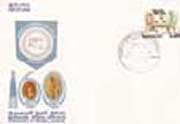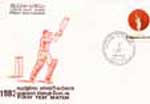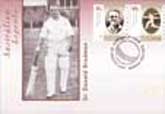



![]()
| Hello Children,
I am sure that most of you have watched the T.V. programme that was telecast sometime back about a boy who grew up in the jungle called Tarzan. He was the hero of the jungle, he could speak to the animals, understand them and do all sorts of daring acts. It would be everyone's dream to imitate such people to be important like Superman, Batman and Tarzan to save the world. However much you would like to be like them you must realize that is all make believe and going to imitate them can only put your lives in danger. So next time when you watch such programmes and long to do the things Tarzan, Incredible Hulk or Spiderwoman do, remember that it's not for real and not worth risking your lives for. Take Care. Until next week, Auty Sunshine |
It all started one day during spring vacation. Twins Lila and Ellen were free for the week, since their parents had gone on a business trip and John, their brother was out that week at his friend's house.
Things had become spookier since their parents left. First Lila's comb which was left on the desk drawer turned to be out on the bedside table. Then Ellen's sneaker which was kept under the bed appeared in Mr. and Mrs. Franklin's room. Now they were convinced a ghost was trying to tell them something. Things became worse when Ellen started acting strange and weird. She always slept in the morning and always wore white clothes and at night she slept very late. Lila was sure the spirit which was haunting the Franklin's house was in Ellen's body and she was terrified she might lose her twin.
That night Lila had a nightmare like Ellen falling off some rocks and the ringing of the church bell. Lila had this dream for the next few days. Then she discovered that the ghost was trying to push Ellen off a cliff and couldn't save her unless she rang the church bell, that same night. She got up with a scream, then saw Ellen was not in bed. Lila knew where she was so she headed to the church, but when she reached there she could see Ellen clinging on the cliff ready to fall. She rang the bell three times and ran to the cliff. She reached down for Ellen, but she was in danger of falling. She looked around and saw a rope nearby so she took it and threw it down to Ellen who came up hanging on to it. At last the ghost had disappeared in a glow of light and Ellen was safe. They didn't tell their parents or John. But most important of all Lila had saved Ellen.
The word 'Ambition' has a deep meaning. It means being determined, having a desire for power and fame or getting a thing or a position in our lives. All people have ambitions. We can only succeed if we are ambitious and can fulfil great achievements in our lives. A person without an ambition is like a bird without a wing.
My lifelong ambition is to become a teacher. I like this profession because I like being with children. I could give them a good education and teach them good habits. Perhaps I could exchange ideas with them. As a teacher I could learn a lot of things and I would always be in touch with education.
Of course if we want to fulfil any ambition in our lives we will have to work hard. We must always be alert, hard working, enthusiastic and perservering to reach out goals.
It was a bright day. I woke up early in the morning and got ready to go to school. My parents had got everything ready. My mother had made some milk rice which we all enjoyed. Then I worshipped my parents and left home with my father to go to school.
When we reached the school, there were many children with their parents. First we went to meet the principal. My father talked with the principal for some time and then she took me to a classroom. There she handed me over to two teachers. There were already many children in the classroom and the two teachers were very kind to us.
We spent the time singing, drawing and playing. It was a happy day. I can still remember my first day at school. It was the happiest day in my life.
Stamp News 5 STAMP CORNER |
With so much interest in cricket today, let us have a look at our stamps issued to commemorate events relating to the game.
 Sixteen
years ago on February 17, 1982 the First Cricket Test between Sri Lanka
and England was played at the P. Saravanamuttu Stadium in Colombo. To mark
the event a stamp in the denomination of Rs. 2.50 was issued.
Sixteen
years ago on February 17, 1982 the First Cricket Test between Sri Lanka
and England was played at the P. Saravanamuttu Stadium in Colombo. To mark
the event a stamp in the denomination of Rs. 2.50 was issued.
This was the first Test played after Sri Lanka gained full membership of the International Cricket Conference (ICC) on 21 July 1981. Sri Lanka was captained by Bandula Warnapura and England by Keith Fletcher. The highlight from Sri Lanka's point of view was the half century by 18 year old Arjuna Ranatunga, still at school, who along with Ranjan Madugalle (he made a top score of 65) defied the England attack when the top order had been wiped out for 34 runs. Sri Lanka made 218 in the first innings. The match ended with a 7 wicket win for England.
The Test match also marked 100 years of cricket between England and Sri Lanka. The first match had been played in October 1882 when an all-England team played a whistle stop game in Colombo.
160th anniversary
On 8 September 1992, a Rs. 5 stamp was issued to mark the 160th anniversary of Sri Lanka cricket. It coincided with a Test Match between Sri Lanka and Australia played at the Tyronne Fernando Stadium, Moratuwa.
The stamp depicted two cricketers and a match played at Kandapola grounds in 1938.
According to the 'Colombo Journal', the first cricket match was played on 6th September 1832 between the 97th Regiment (a British army unit) and the 'Civilians' (all Englishmen) which led to the formation of the Colombo Cricket Club (CCC). At that time cricket was an exclusive game for the wealthy British businessmen and military personnel.
With the founding of the Colombo Academy (present Royal College) in 1835, Rev Brook Bailey introduced the game to the College. That was the beginning of school cricket in Sri Lanka. In 1879 Ashley Walker, a Yorkshire county cricketer and Cambridge Blue who had come as an assistant master to Colombo Academy arranged a match with St Thomas College, Mutwal.
World Cup win
Sri Lanka's victory in the World Cup Cricket Tournament in March 1996
was commemorated five months later with the issue  of
four stamps on 18 August 1996. It was one of the rare occasions when Sri
Lanka issued triangular stamps. A miniature sheet with the stamps (Rs.
2, 10.50, 17 & 20) was also released.
of
four stamps on 18 August 1996. It was one of the rare occasions when Sri
Lanka issued triangular stamps. A miniature sheet with the stamps (Rs.
2, 10.50, 17 & 20) was also released.
 When
Arjuna Ranatunga held aloft the World Cup in Lahore on 14 March 1996, Sri
Lanka had rewritten the record books and the nation rejoiced. Not since
the West Indies in the 70 s had a team won every match they played in the
World Cup, the host nation had never won the Cup (Sri Lanka along with
India & Pakistan hosted the 1996 Tournament), nor had a team batting
second been winners.
When
Arjuna Ranatunga held aloft the World Cup in Lahore on 14 March 1996, Sri
Lanka had rewritten the record books and the nation rejoiced. Not since
the West Indies in the 70 s had a team won every match they played in the
World Cup, the host nation had never won the Cup (Sri Lanka along with
India & Pakistan hosted the 1996 Tournament), nor had a team batting
second been winners.
The stamps were designed by Sudeepa Puranajith and depicted the World Cup, a batsman, a bowler and a wicket keeper. Each carried the legend '1996 World Cup Cricket Champions Sri Lanka.'
Australia selected the greatest cricketer of our time Sir Donald Bradman ('The Don') to introduce a new series of stamps - 'Australian Legends' - featuring a living person. Last year on Australia Day (23 January) two stamps were issued to honour him. (A special coin was also issued in his honour).
 Sir
Donald started his record breaking career when on his first tour to England
in 1930, in a Test at Leeds he hit a century before lunch, another between
lunch and tea and ended the day with an unbeaten 309. The first day cover
carried a picture of him going out to bat at this Test when he scored 334
runs in 375 minutes with 46 fours.
Sir
Donald started his record breaking career when on his first tour to England
in 1930, in a Test at Leeds he hit a century before lunch, another between
lunch and tea and ended the day with an unbeaten 309. The first day cover
carried a picture of him going out to bat at this Test when he scored 334
runs in 375 minutes with 46 fours.
When he retired in 1949 he had an extraordinary Test average of 99.94 runs, had scored a century in every third innings in first class cricket and had produced 2 triple hundreds, 5 double and 22 centuries in his 52 Tests. He was once left short of partners at 299 in a Test against South Africa.
Writing to the John Player Cricket Annual '86, Sir Donald reminisced on his first match in Colombo "55 years ago when there was ample evidence of the skill of our opponents." At 90 years, somewhat feeble, Sir Don leads a quiet life at home. Recently a Bradman museum was opened in Adelaide.
Most fish today are graceful, agile swimmers. But the early fish were different. Covered with thick, bony armour and with only feeble fins, they must have moved slowly and awkwardly. The reason for their armour was probably the giant seascorpions, whose pincers could crack open all but the strongest protection. With enemies like this, the early fish had either to outswim them or to evolve some defensive armour.
These armoured fish did not swim about much in mid-water, like fish today. Weighed down by their armour, they spent most of their time on the bottom of the sea. They could wriggle from place to place, using their tail and clumsy flippers, but they could not pursue their food. Many of these first fish did not even have any jaws with which to bite. Cephalaspis ploughed along the bottom, swallowing the mud and any small worms and snails in it. It was only 20-30 centimetres long, with a flattened body so that it did not sink into the mud. On its head, which was a solid mass of bone, it had special sensory areas. These were covered with tiny bones and probably helped it to detect the movements of its enemies.
Pteraspis, which was only 15 centimetres long, lived in lakes and streams. It must have swum rather clumsily against the currents to get upstream as it had no fins to guide it. For food it may have scraped plant growth off the rocks with its nibbling mouth plates.
Spines and speed
Some other fish, such as Climatius, found that speed was better than armour as a protection from their enemies. They had a cover of thick diamond-shaped scales, but they also had a powerful swimming tail and a series of fins to steer themselves through the water. At the front end of these fins were sharp spines, like those of a stickleback, which made them hard for other fish to swallow.
To swim faster, some fish evolved lighter bodies in which the skeleton of heavy bones was replaced by one made of cartilage. Cartilage or gristle covers the joints between the bones in all backboned animals (vertebrates). An early fish with a light skeleton of cartilage was Xenacanthus. It was 75 centimetres long and had paddle-like fins and many sharp teeth. The first land fish
The first backboned animal to go ashore was a fish. Though most fish today live in the water and breathe through gills, some do not. Several tropical fish venture into mud near the water in search of food. They breathe air through special cavities near their gills. But a few fish, called lungfish, have lungs just like those of amphibians, as well as gills. They live in tropical regions, where the river often dries up for part of the year. Lungfish dig holes in the mud and use their lungs to breathe air until the river fills up again. Similar burrows dug by ancient lungfish have been found.
Several of the earliest fish also had lungs, which they probably used in a similar way. But, to move on land, a fish also had to have strong fins. One group of fish that had quite strong fins were called the Rhipidistians. One of these was Eusthenopteron which may have been the ancestor of all the backboned animals that have lived on land. It was about a metre long, and lived during the Devonian Period .
The body of Eusthenopteron was covered with scales, and it had a powerful swimming tail. Its jaws contained many sharp teeth and it must have hunted other smaller fish for food.
The development of amphibians
Even if the adult Eusthenopteron, ate other fish, its young were themselves probably hunted by many other bigger fish. With so much danger in the water, the little Eusthenopteron probably kept the shallow water as much possible. There, they were safe from the bigger fish, which would have gone aground as soon as they tried to reach them.
Safe in the shallows, the young Eusthenopteron must have fed on worms, snails and water insects. But, with their stout limbs, and their ability to breathe air, they would have been able to extend their search for food up onto the moist mud above the edge of the water. They soon found that there was plenty of food there, far from the dangerous waters. Gradually, over several millions of years, these fishes spent more and more of their lives on land. Their fins turned into limbs to support them, and their backbones became stronger to take the weight of their bodies. They had become the first amphibians.
Return to Mirror Magazine contents
![]()
Please send your comments and suggestions on this web site to
info@suntimes.is.lk or to
webmaster@infolabs.is.lk